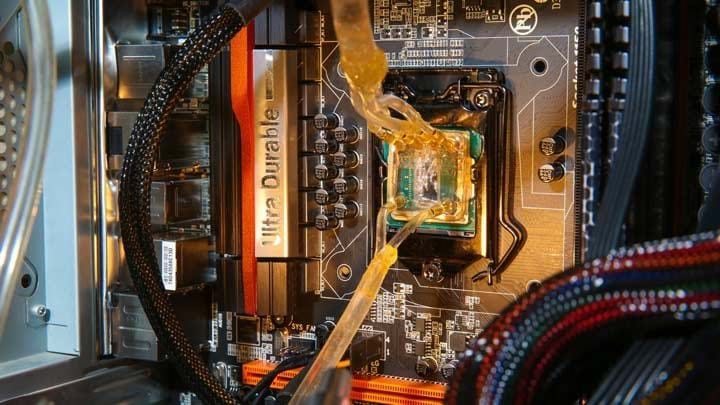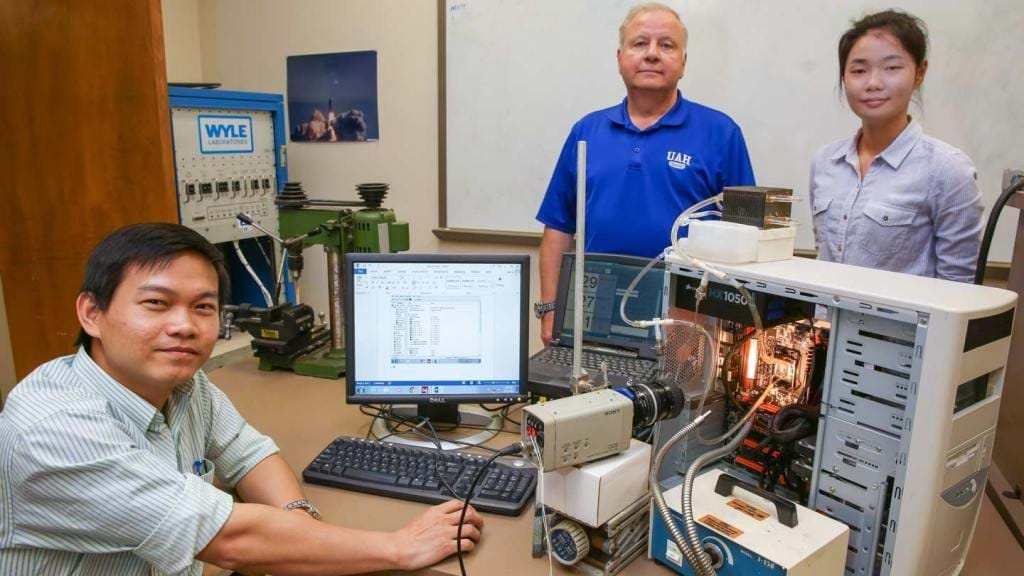Super cooling computers could save billions (Day 340)

2nd May 2015
We are all heavily reliant on personal computers. At home, at work and on the move. However, we have all experienced the noise and annoyance of the cooling fan in our computers when we push their processing power too hard.
A team of chemical engineers from the University of Alabama in Huntsville (UAH), US, have come up with a solution – ditch the fan altogether.

Now obviously, their solution is not as simple as that; they have also developed technology that keeps computer chips cooler.
The team also estimates that the adoption of this technology could save US consumers more than US $6.3 billion a year by reducing the energy used in computer cooling fans.
The team led by Dr James E. Smith Jr., a UAH chemical engineering professor emeritus, has developed a system which uses convection to circulate 3M’s Fluorinert FC-72 liquid coolant though channels in the computer’s processor and then into a heat sink, which serves as an external radiator.
Fluorinert FC-72 is the 3M brand name for an electronic cooling liquid and electrical insulator. It is colourless, odourless, biologically inert and a chemically stable dielectric liquid that is non-flammable with a boiling point of 56oC.
In their system's convection cycle, heat from the computer processor vaporises the liquid FC-72. This lighter vapour circulates to a heat exchanger where the heat is dissipated. It then condenses back into the liquid phase as it cools and passes to a holding tank. From the tank, the liquid returns to the processor and the cycle begins again.
This project began as a part of a thesis by chemical engineering masters student, Cuong Nguyen. The project was awarded US $10,000 in 2014 from the UAH Charger Innovation Funds.

Cuong compared the team’s passive cooling system with traditional solid-state cooling, and fan cooling in computers running for up to 12 hours under various load conditions, using modified Intel Pentium 4 and Core i3 processors.
A steady state operating temperature of 56 oC was demonstrated. This falls comfortably with the desired 50-90oC range for processor operating temperatures.
"Our system can absolutely work, and it can work for 12 hours in a stable condition," Cuong said. "When we remove the cooling fan, it saves material costs, but it also eliminates the noise, vibration and dust contamination of fan cooling. When you remove the dust, you remove the chance that it can build up. Build up of dust can destroy electronic components."

The team also suggest that this type of liquid passive cooling has a range of applications beyond home and business computers. For example, it could be used in temperature stabilisation of electronic guidance and propulsion controls in outer space and in efficient power delivery systems.
Professor Smith suggests that in addition to consumers cutting their energy bills, in the US alone, manufacturers could save US $540 million in material costs by eliminating fans and associated wiring
The energy cost savings that are possible by rolling this technology out to the next generation of personal computers is a prize worth pursuing. And you don't need a computer to figure that out!
If you are working to find a way to re-engineer an everyday product, why not get in touch and tell us about it.